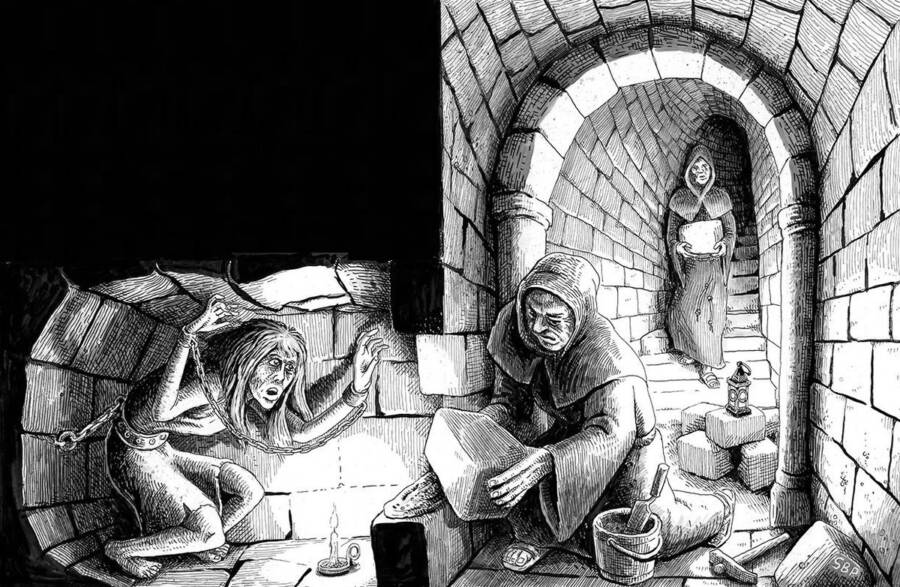Immurement, or the entire confinement of a living person into a narrow space with really no means of escape, was traditionally a widespread form of punishment all over cultures. The horrifying stories of people who were buried alive or sealed up throughout history are numerous. Among the weakest torture methods was putting a person inside a small box. However, some immurements were done on purpose, particularly by non-theists who performed different religions, like priests, monks, and nuns. One of the methods of torture used, especially on women, was to capture someone in a small space.
These immurements could go on for a few days, a few months, a few years, or even forever. Some of the immured were sacrifices, while others were innocent bystanders. Anyone who was even the slightest bit claustrophobic would have continued to struggle greatly in the horrifying accounts of historical immurement, and as time went by, food and energy dwindled, immurement must have appeared like an unusually brutal hell.
Also Read: The Ghosts Of Kirby Road: An Urban Legend That Never Spared
It Does Not Mean Total Death
There were various immurement cases that were purposefully handled as extremely slow executions. Immurement, however, could also be a brief state that was applied either voluntarily for a predetermined period of time or as a form of punishment. In order to punish sinners, especially those who committed sins of the flesh, the middle ages Christian church used temporary immuration.
These people spent months or even years being locked away in a monastery’s depths or bricked up in small spaces with a narrow gap for food and water. Hundreds of years later, this sort of immurement continued to be used as a means of punishment. A great example is the unlucky demise of James Hepburn, Mary, Queen of Scots’ third husband, who was charged with treason. He was captured in Denmark after escaping Scotland and was held at Dragsholm Castle. He was placed in a pit that was too small for him to stand in and lived in complete darkness on leftover food.
Hepburn managed to remain in his hole for 5 years as the Danish government largely forgot about him. He behaved like a wild animal after he was finally tracked down. Hepburn didn’t speak; all he did was pace back and forth and yell. He passed away soon after. Immurement occasionally involved ready subjects. Immurement was performed by Christian nuns and monks as a form of spiritual practice. They would select the approach, setting, and timeframe.

Also Read: The Strange Death of Christopher Case: Was He Really Cursed?
Holy Women Preferred To Be Confined With Young Children, Either Boys or Girls
Although these immurements were presented as a sort of religious routine, they were really more of a case of “pain and suffering loves company.” Julian of Norwich, a mature holy woman, would occasionally request to be confined for a period of time (years were not uncommon) with a small child younger than ten. These kids may be orphans, but their parents frequently gave them to the Church as “gifts.” The concept is that the child would be a partner to the voluntarily immured, an icon of pure innocence. Through a tiny opening in the bricked-up wall, the nun and her “buddy” would accept food, but they wouldn’t ever leave the room.
Lustful Vestal Virgins Get The Perfect Penalty
Roman religious authorities, adherents, and even the secular state all took the faith seriously. The celibacy of women and the way a woman’s natural sexual desire was overpowering and thus needed to be managed were ongoing concerns, as they are in most communities. Female monastery priestesses of the goddess Vesta, known as Vestal Virgins, were held to an especially high standard of behavior. All made a holy chasteness promise. The priestesses, though, were living people and occasionally made mistakes.

Until their lusty practices were found, this was not a problem. In these cases, a guilty priestess received the death penalty. Permanent immurement was the most common type of this. The Vestal Virgin would then be put in a burial chamber or cave after being stripped, thrashed, and clothed in a corpse’s clothes. She would usually be locked up or bricked up with a pitifully small quantity of food, water, and candles or lights. The Vestal Virgin would suffer a slow, miserable death once the resources ran out.
Also Read: The Mystery Of Port Chatham: A Creature Of Myth Comes Alive




